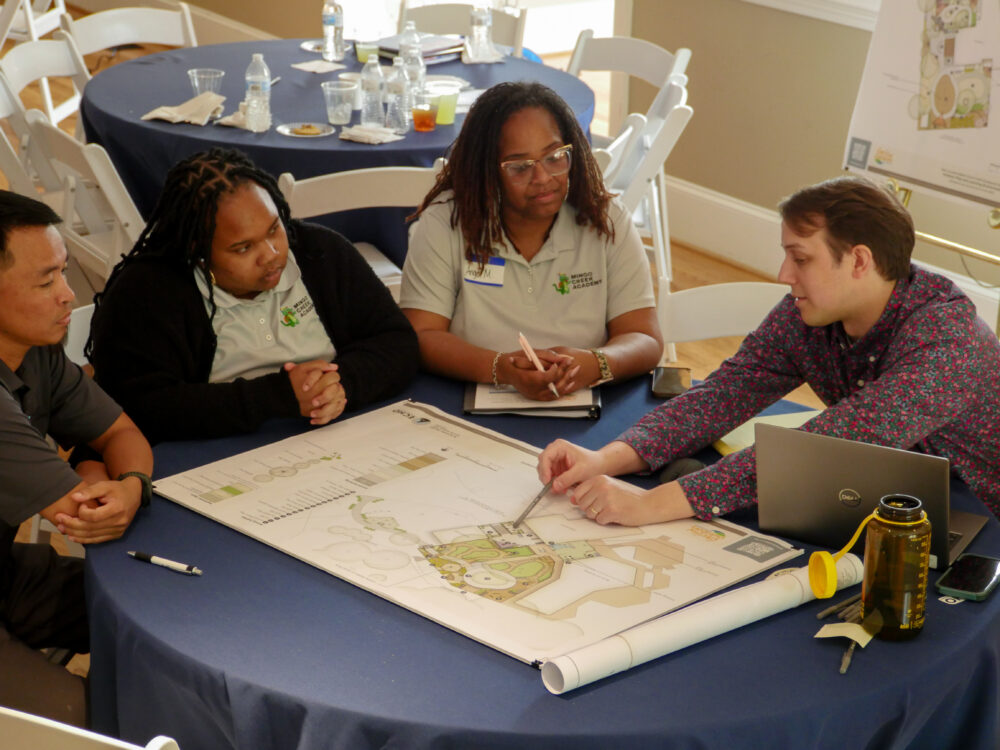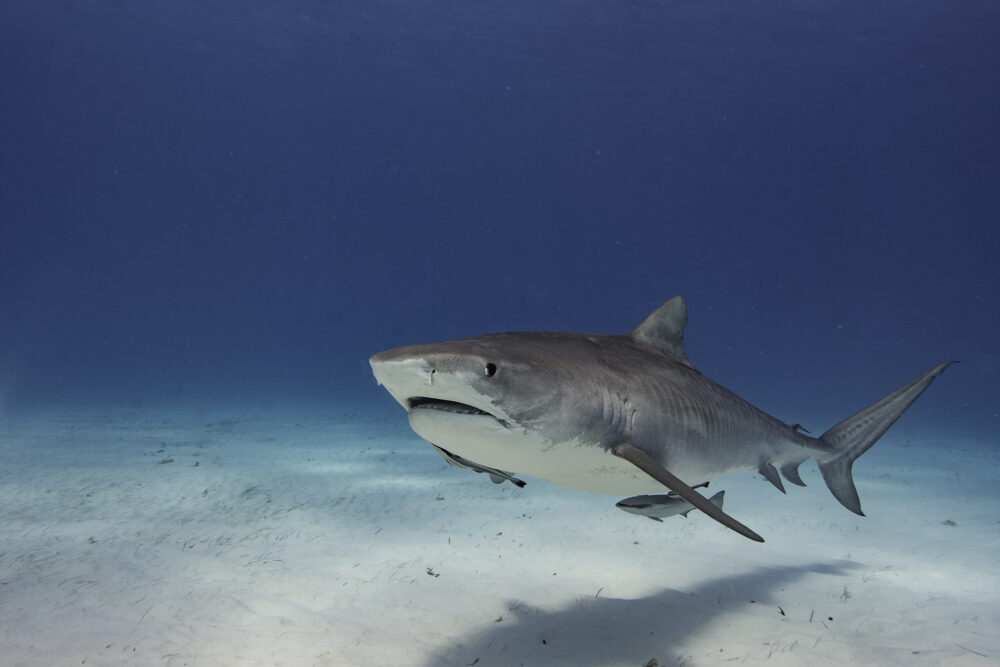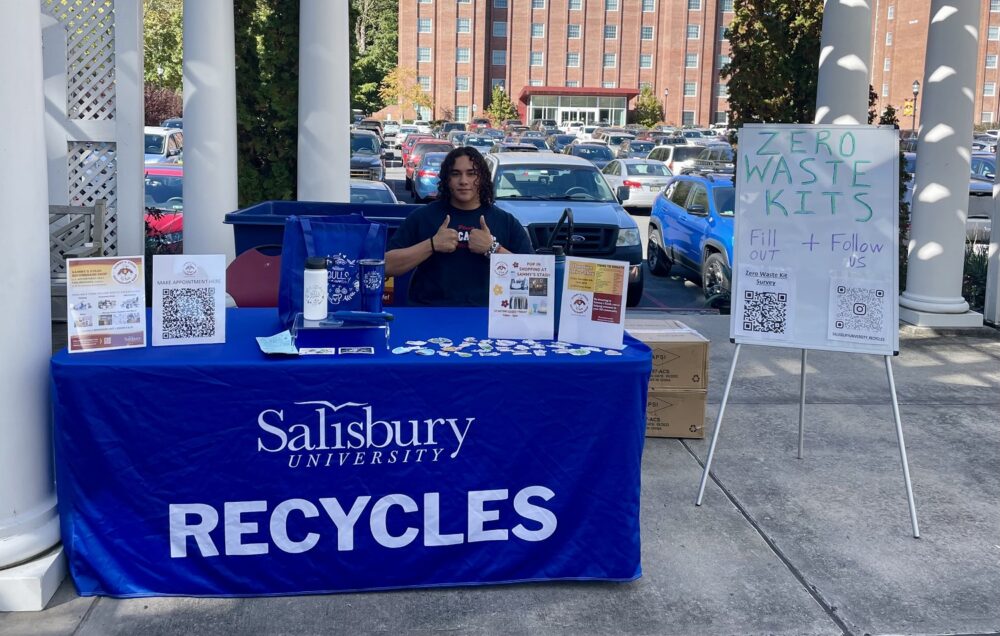We have much more to do and your continued support is needed now more than ever.
Make a Field Guide… to Your Yard!
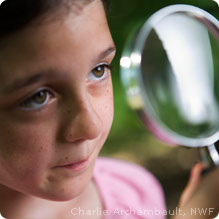 Here’s a project that will keep your family active, learning, and having fun at any time of the year: create a field guide to your yard. The guide can be about birds or butterflies or plants—anything natural you find in your yard. If you don’t have your own green space, visit a local park or a schoolyard.
Here’s a project that will keep your family active, learning, and having fun at any time of the year: create a field guide to your yard. The guide can be about birds or butterflies or plants—anything natural you find in your yard. If you don’t have your own green space, visit a local park or a schoolyard.
A field guide involves both indoor and outdoor activities. Outdoor activities include exploring, observing, drawing, or photographing plants and animals. Indoor activities include research, writing, and the creation of your book. You can work on your project for an hour, a day, or throughout the year.
Your pages can be simple—a picture or drawing of an animal, its common name, and its scientific name. Or they might be more descriptive and include the time, date, and location you discovered the animal, what it was doing, and information you research on the web or at the library (habitat needs, migration and nesting information, etc).
This is a fabulous shared family activity for children of all ages including teenagers. It’s not just a project—this is an experience!
Ten tips to successfully create your own field guide: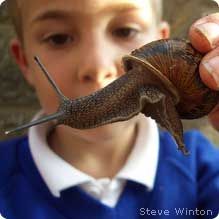
-
Vary observation time. Observe during different times of the day: the best observation time for birds is early morning and late afternoons, at midday for butterflies, and at night for moths and owls.
- Before unplugging, research online. For example, at enature.com you can get a list of plants and wildlife in your area. At nwf.org/naturefind, you can use your Zip code to get a list of parks and trails near you. At my website, takeawalk.com, you’ll find nature challenge videos to help you know what to look for. When you come back inside, use NWF’s Wildlife Watch to report what you found!
- Take it on the road. Nature is not a destination! Explore everywhere you go this summer — while on vacation or while visiting grandma’s house. Even if you don’t include these other locations in your field guide, your kids will discover that there is always something new to see in nature.
- Be safe. Teach your children about poison ivy, keep a distance from wildlife, and be vigilant about other safety issues.
- Let go. Make outdoor exploration time a time that you are present but not supervising. Your kids won’t have fun if you are continually saying “no” and “don’t touch” and “don’t go there.” Find places to let them go and things to let them touch. Allow them to think independently and to observe on their own, to get dirty, to take their shoes off and walk in the creek or the mud. And whatever you do, don’t project your phobias about bees, spiders, and other things onto your kids.
- Show your geek. Kids are turned onto and tuned into technology, so include it in your project. Create your book on the computer (PowerPoint is a good tool and template for this). Use a digital camera and let even the youngest of your kids take photos. Buy and learn how to use a GPS device. Scan leaves and acorns for your book. Be a geek. If you don’t know how to use this stuff, your kids can teach you!
- Demonstrate respect. Use the project as a tool to show your children respect and appreciation for their environment. Leave only footprints.
- Play. Share your childhood outdoor play with your children. Show them how to play the cloud game, the buttercup game, and how to skip stones. Pass onto your children what was passed onto you when you played outdoors.
- Be proud. When your book is done, post it on the web. Create a jpeg image of each of your pages (by scanning them or, if you created them in PowerPoint, use the “save as” feature”), open a free picture sharing account at a site such as Flickr and share your field guide with the world. Your relatives, children’s teachers, and friends will enjoy your book. Or send it to me at takeawalk.com and I’ll post if for you.
- Savor the moments. The benefits of taking a walk together to observe nature are too numerous to list. But time together is a precious gift for you and your children. Nature exploration provides lifelong memories and makes lifelong learners of all of us. Try this project. You and your children will love it. I guarantee it!
For more information on creating a field guide, visit www.takeawalk.com.
Share Your Outdoor Memories
- We’d love to hear about your backyard field guide! Post your photos and tell us your story, if you do this activity. If you post your beach memories on your own blog, post the link onFacebook, send us a tweet, or email us.
- Read about one California mom and her son who created their own backyard field guide.
Jane Kirkland is the award-winning author of the “Take A Walk®” series of nature discovery books as well as “No Student Left Indoors: Creating a Field Guide to Your Schoolyard”, the acclaimed educator’s guide to helping students discover nature in their schoolyard. To learn more about Jane and her books visit: www.takeawalk.com.













